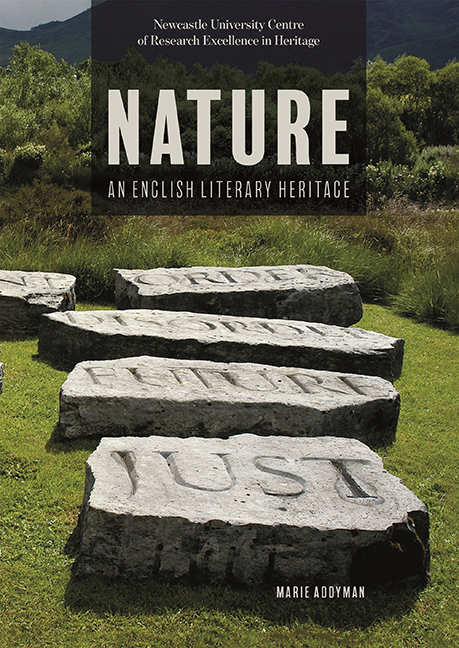Book contents
- Frontmatter
- Dedication
- Contents
- Acknowledgements
- Preface
- Introduction: Infected Minds
- I Nature as (A)morality and Mortality in Early Modern England
- II Living the Wild Life in the Nineteenth Century
- III Nature and History: Towards the Anthropocene
- Afterword: Apokalypsis
- Bibliography
- Index
- Previous Titles
8 - The Natural Family (3): Tellus mater
Published online by Cambridge University Press: 11 June 2021
- Frontmatter
- Dedication
- Contents
- Acknowledgements
- Preface
- Introduction: Infected Minds
- I Nature as (A)morality and Mortality in Early Modern England
- II Living the Wild Life in the Nineteenth Century
- III Nature and History: Towards the Anthropocene
- Afterword: Apokalypsis
- Bibliography
- Index
- Previous Titles
Summary
THE BLESSED PLOT
Not all writers felt the need to understand the cultural history of the landscape in which they lived as exiles from their mother country, and not all felt the need either in actuality or in imagination to visit the far beyond. John Ruskin, who was all his life a passionate lover of mountains and uplands, nevertheless remarked in 1853 in the course of analysing The Nature of Gothic that
Most of us do not need fine scenery; the precipice and the mountain peaks are not intended to be seen by all men … But trees and fields and flowers were made for all, and are necessary for all. (Ruskin 1997, 105; NOG)
So while those upper regions where different laws apply have been celebrated in several texts, English-speaking writers from the eighteenth century onwards also passed on a literary heritage celebrating those more modest places which meant home. When the naturalist parson Gilbert White (1720–93) wrote in the 1780s of a ‘vast range of mountains’ he was referring to the Sussex Downs (White 1996, 64; The Natural History of Selbourne), not the Lake District, the Cairngorms or the European, Asian and African peaks climbed by ‘true’ mountaineers. When he wrote about the rights and wrongs of hunting nearly a hundred years before Thoreau, like that other English country parson Gibson referred to in chapter 6, he was reflecting on an embedded social system, concerning which he asserted that ‘most men are sportsmen by constitution’. (Landry 2001, 30–4). This is in contrast to Ruskin a century later who, as Roger Deakin comments, was harking back to medieval Gothic as ‘a positively revolutionary force’ which enabled and valued the craftsman prior to those economics which reduced him to ‘slavery’ (Deakin 2008, 113). This is that continuing theme of nostalgia for a certain kind of rural past we have seen noted by Raymond Williams here united to strong social criticism of the present in a most unexpected context.
Like Thoreau later, for White his local pond, Bean's Pond, ‘[was] worthy of the attention of a naturalist or a sportsman’ (White 1996, 30–3; NHS), and he too measured the dimensions of that pond.
- Type
- Chapter
- Information
- Nature: An English Literary Heritage , pp. 233 - 268Publisher: Boydell & BrewerPrint publication year: 2021



